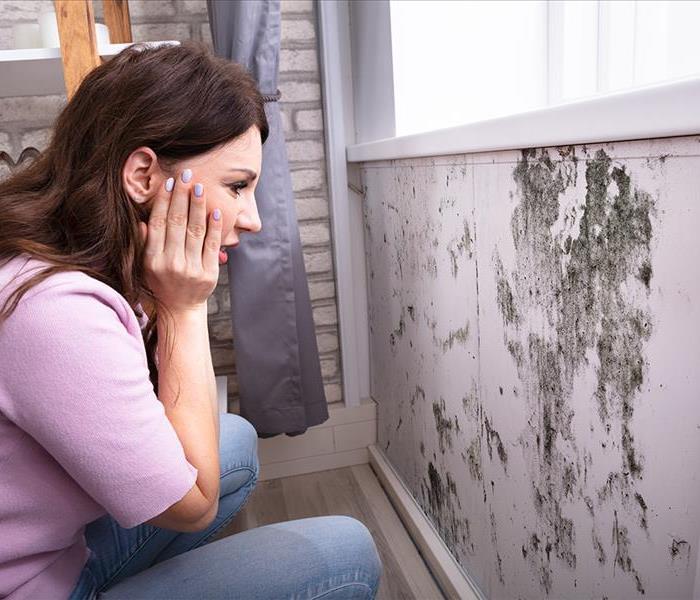Mold Tips - How to find and handle Mold
3/4/2020 (Permalink)
Mold is a common issue in the humid climate of Charlotte NC and the greater Carolinas. Knowing what to look for and how to handle a mold problem are the first steps.
What is Mold?
- Mold is a fungus, a multicellular plant-like organism, that does not produce chlorophyll as plants do. Fungi include mildew, mushrooms and yeast.
- Fungi is everywhere and we breathe mold spores everyday. In normal doses, typical of outdoors, fungi are not a threat to human health and may even have positive effects.
- Molds ripen cheeses and give them flavor. Some mushrooms are deliciously good to eat. Yeasts cause fermentation that produce alcoholic beverages and some breads.
Causes of Indoor Mold Growth
- Mold releases tiny spores in order to reproduce. These tiny spores can become airborne when disturbed and settle on surfaces where they lie dormant for extended periods waiting for ideal growth conditions.
- The settled spores require three conditions to grow:
- Food source: Organic materials
- Temperature: 68-86 degrees
- Moisture: Relative humidity above 60%
- Spores can germinate after only 12 hours in some conditions. They more commonly germinate in the 24-48 hour range.
Once You Suspect Mold
Step 1: Contact an Industrial Hygienist (IH) or an Indoor Environmental Professional (IEP). An IH/IEP will perform a visual inspection and sample the air and surfaces where suspected mold growth is present. The samples are then sent to a lab to analyze and determine the type of mold that exists. Once the lab report is received the IH/IEP provides a report and outlines a protocol for a certified mold remediation contractor to adhere to.
Step 2: Contact SERVPRO to remediate your mold contamination. We will schedule an appointment for a production manager to visit the property and provide an estimated cost of services based upon the protocol written by the IH/IEP.
Step 3: Once the estimate is approved we will schedule a date to begin the mold remediation services.
Step 4: Upon completion of the mold remediation it is recommended that post clearance sampling be performed by the IH/IEP to ensure the remediation services were successful.
Prevention
- Keep humidity levels in the home below 60%.
- Ventilate and/or dehumidify attics, crawl spaces, and basements.
- Keep bathrooms dry and well ventilated
- Clean, dry or remove anything from your home that is water damaged
- Watch for condensation and wet spots.





 24/7 Emergency Service
24/7 Emergency Service
